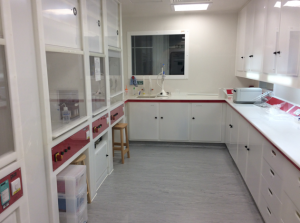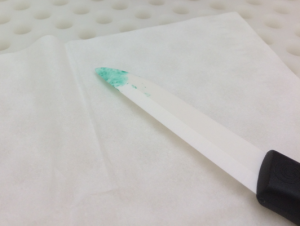Imperial College London – Isotope Geochemistry
It’s been a busy few months since my last post, but after returning from Japan and spending some time back at Queen’s, I embarked on the second stage of my Hugh C. Morris Fellowship on September 1st. This has brought me to Imperial College London where I’ll be working with Dr. Mark Rehkämper and Post-Doctoral Fellow, Dr. Rebekah Moore until December 2nd. We have been working on the conclusion of a study first published in 2015 by Dr. Rehkämper’s then PhD student, Dr. Fiona Larner, investigating zinc isotopic compositions in breast cancer tissue. This involves performing measurements of malignant and benign tumours, adjacent healthy breast tissue, and serum, to compare how zinc isotopes are distributed in breast cancer patients and healthy volunteers.
 The opportunity to collaborate on this project is really exciting for me as it was this research that originally inspired my interest in studying metal isotope fractionation in the human body. But I’m also here to learn the most accurate method for measuring zinc isotopes: the zinc double spike technique. This involves ‘spiking’ samples with a solution containing known quantities of two zinc isotopes to correct for the effects of isotope fractionation that occur in the mass spectrometer during measurement, and correct for any issues with zinc yield while purifying samples. This instrumental isotope fractionation is referred to as ‘mass bias’ and results from higher mass isotopes being transmitted more efficiently from the ion source to the detectors, creating measurements that are biased towards the heavier isotope.
The opportunity to collaborate on this project is really exciting for me as it was this research that originally inspired my interest in studying metal isotope fractionation in the human body. But I’m also here to learn the most accurate method for measuring zinc isotopes: the zinc double spike technique. This involves ‘spiking’ samples with a solution containing known quantities of two zinc isotopes to correct for the effects of isotope fractionation that occur in the mass spectrometer during measurement, and correct for any issues with zinc yield while purifying samples. This instrumental isotope fractionation is referred to as ‘mass bias’ and results from higher mass isotopes being transmitted more efficiently from the ion source to the detectors, creating measurements that are biased towards the heavier isotope.
These have without a doubt been my two most productive months as a graduate student. The whole procedure from digesting a sample to obtaining isotopic data takes at the very least 10 days but there are numerous things that can slow down the process (and things that can go wrong), such as running out of clean containers for handling samples, incomplete digests, instrumental instability, etc. I’ve been in the lab six days a week to make sure we can get through as many samples as possible during my three month visit (while still retaining my sanity). It’s a small miracle that we’ll have analysed about 40 samples by the time I depart.
Dr. Rehkämper and Dr. Moore have been extremely welcoming in integrating me into their research group. This has involved but is not limited to attending biweekly lab meetings, student research presentations, monthly pub nights, and daily tea time provided by the department. Dr. Rehkämper has been setting aside time for weekly meetings which have been a great opportunity for me to get his opinion on research ideas and ask any research/technical questions that come up during lab work. I’ve also been working closely with Dr. Moore who has taken me through all of their lab protocols and procedures and has been joining me during mass spectrometer sessions. It has been great to gain experience working in another isotope lab and it’s been a treat to learn about the research the other PhD students in the group are working on. I’ve also been thoroughly impressed with their facilities. There are five clean room laboratories that are self-contained within the Royal School of Mines at Imperial College and constructed entirely of plastic, including screws. This helps ensure that our procedure blanks contain only about half a nanogram of zinc contamination.
Overall, this has been a great learning experience for me and I’m incredibly grateful for the opportunity that I’ve been given by the Kimberley Foundation to work with some of the leading isotope geochemists in the world. My time at Imperial College has been everything I had hoped for and more. While my stay in London is sadly coming to a close in under two weeks’ time, I look forward to continued collaboration with Dr. Rehkämper and Dr. Moore as we prepare the results of our research for publication in the new year.
P.S. Can anyone guess what made this ceramic knife green?



